Whale sharks (Rhincodon typus) are enormous: the largest known extant fish, with solid reports of specimens reaching or exceeding 60 feet in length. Sizing ocean giants. This puts it slightly ahead of the extinct mackerel shark, Carcharocles megalodon, estimated at 52 feet, and a rival to the slightly larger Jurassic filter-feeder Leedsichthys problematicus, for the title of largest known fish. But, for all their size, whale sharks are harmless, slow-swimming filter feeders. Which begs the question; how do these plankton-feeding Goliaths survive, and even thrive, in oceans populated by macropredators like 20+ feet (7-meter) great white and tiger sharks (Carcharodon carcharias and Galeocerdo cuvier) and the even larger 30+ foot (9+meter) Killer whale (Orcinus orca)? It would seem the whale shark should be nothing more than a slow-swimming buffet for all these mighty carnivores, and that its numbers would be regularly decimated. Yet, somehow, for millions of years they’ve survived and soldiered on. How do they do it, and what is their secret?
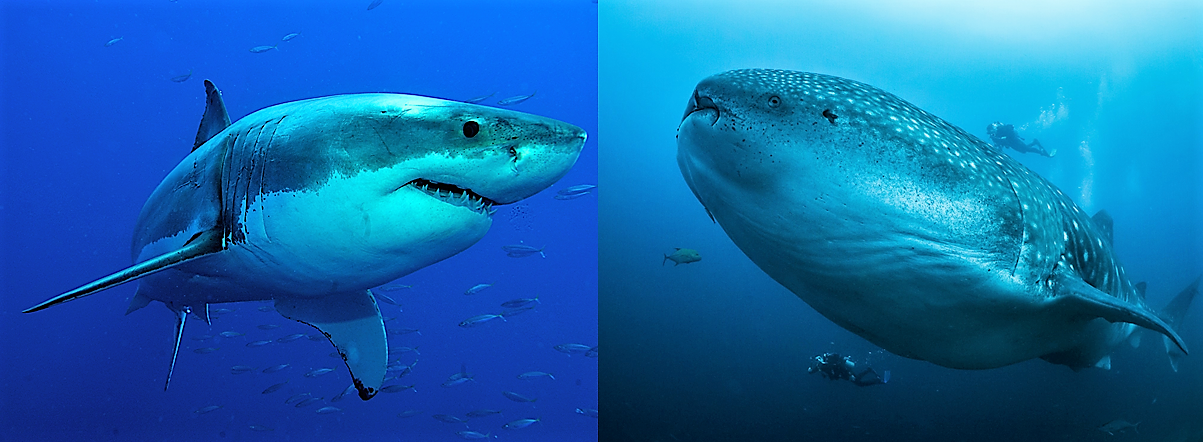
Evolution and anatomy are the keys. Sheer size alone does not protect a whale shark from attack. After all, how could it? To reach 60 feet in length, a whale shark must survive for many years, and the babies and young are not much faster than the adults, which swim at a slothful 3 mph. Yet, still, the juveniles manage to run the gauntlet of every macropredatory shark species that exists, of which, until they pass the 7-meter mark, many of which are every bit as big as they are.
The whale shark’s thick skin – up to eight inches or more in the larger specimens – contributes to their survival. A sort of marine armor, this thick dermal tissue is remarkably resilient and regenerates quickly after an attack (note these before and after pictures of a whale shark that had been bitten by, presumably, a great white)
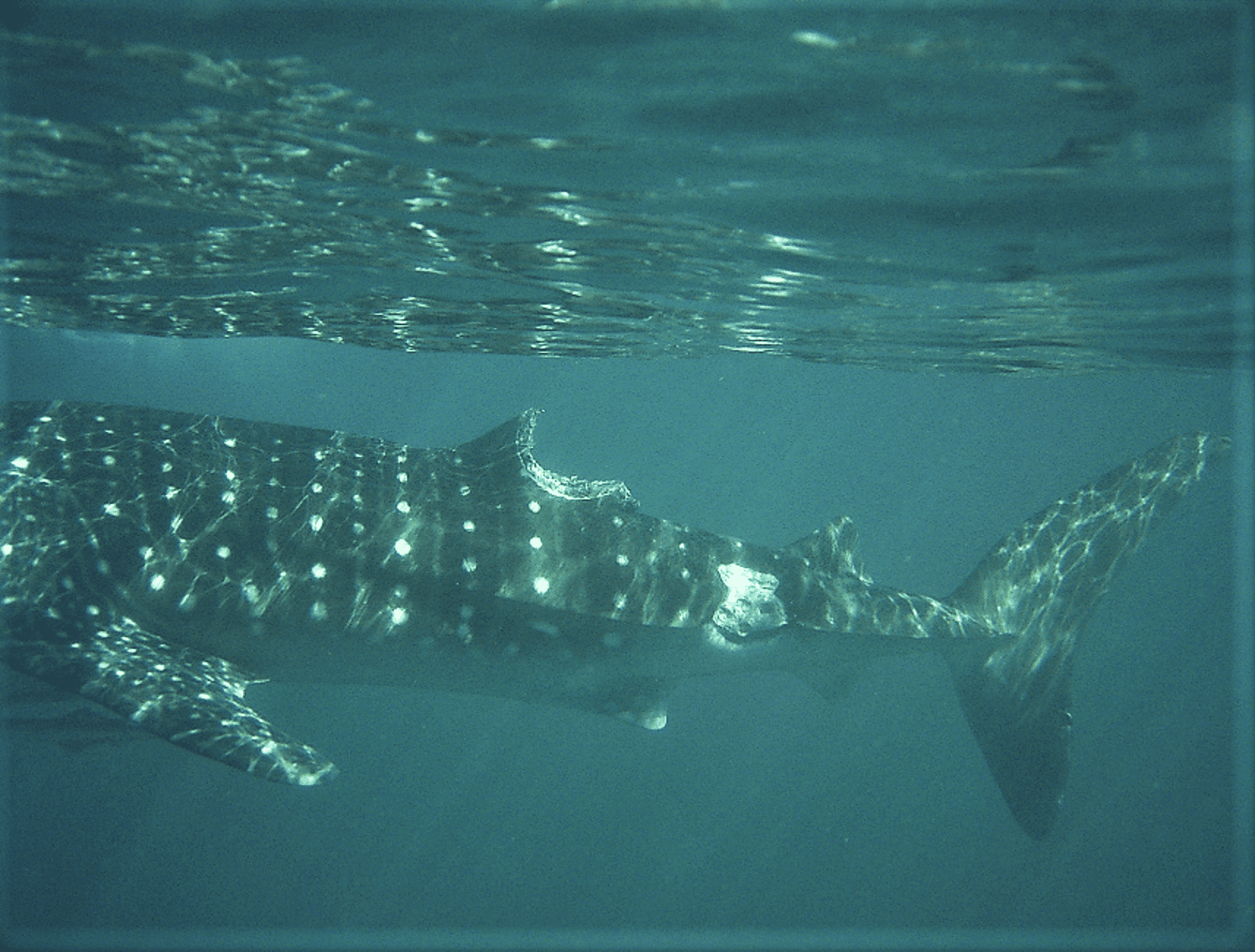
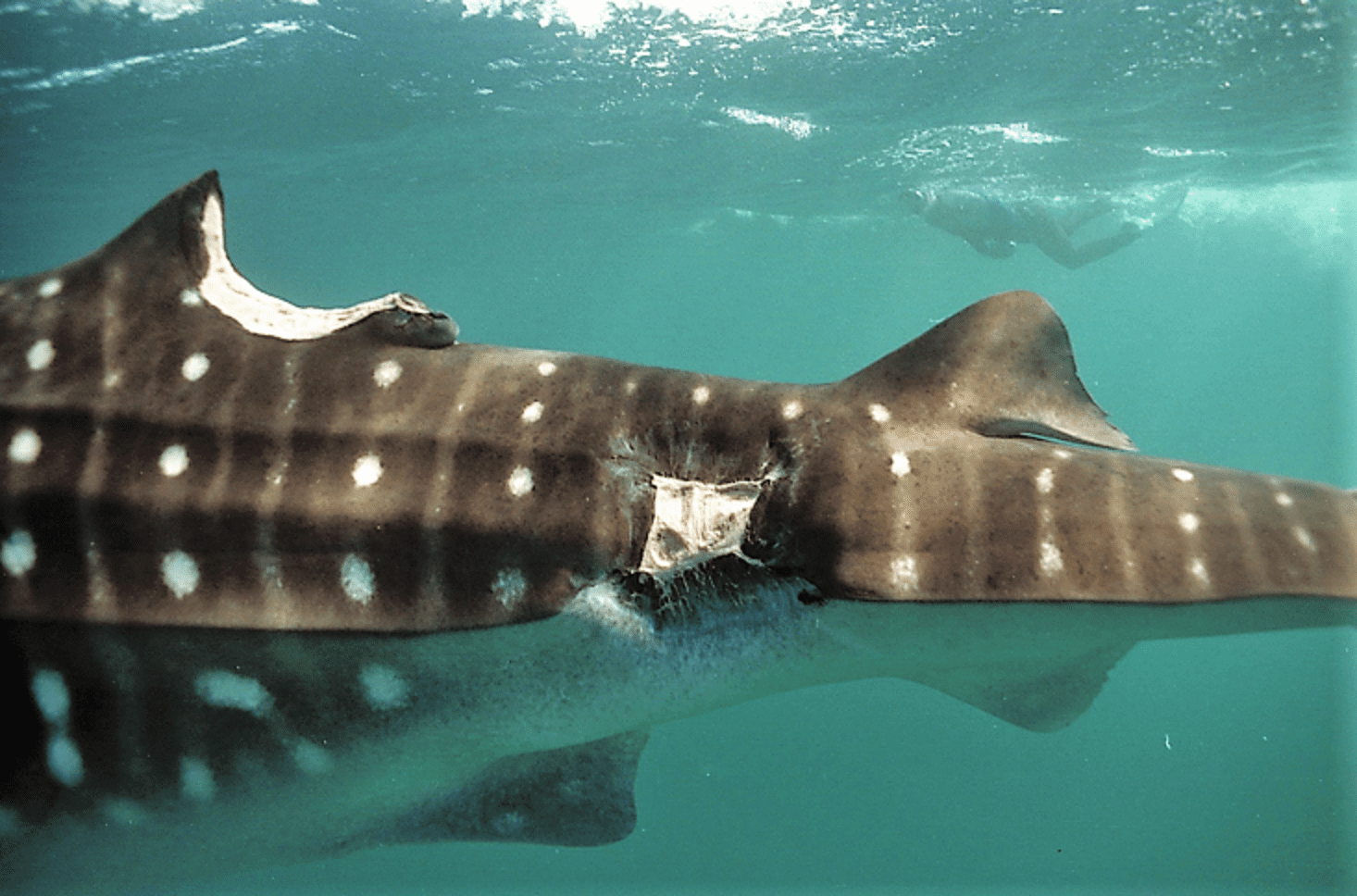
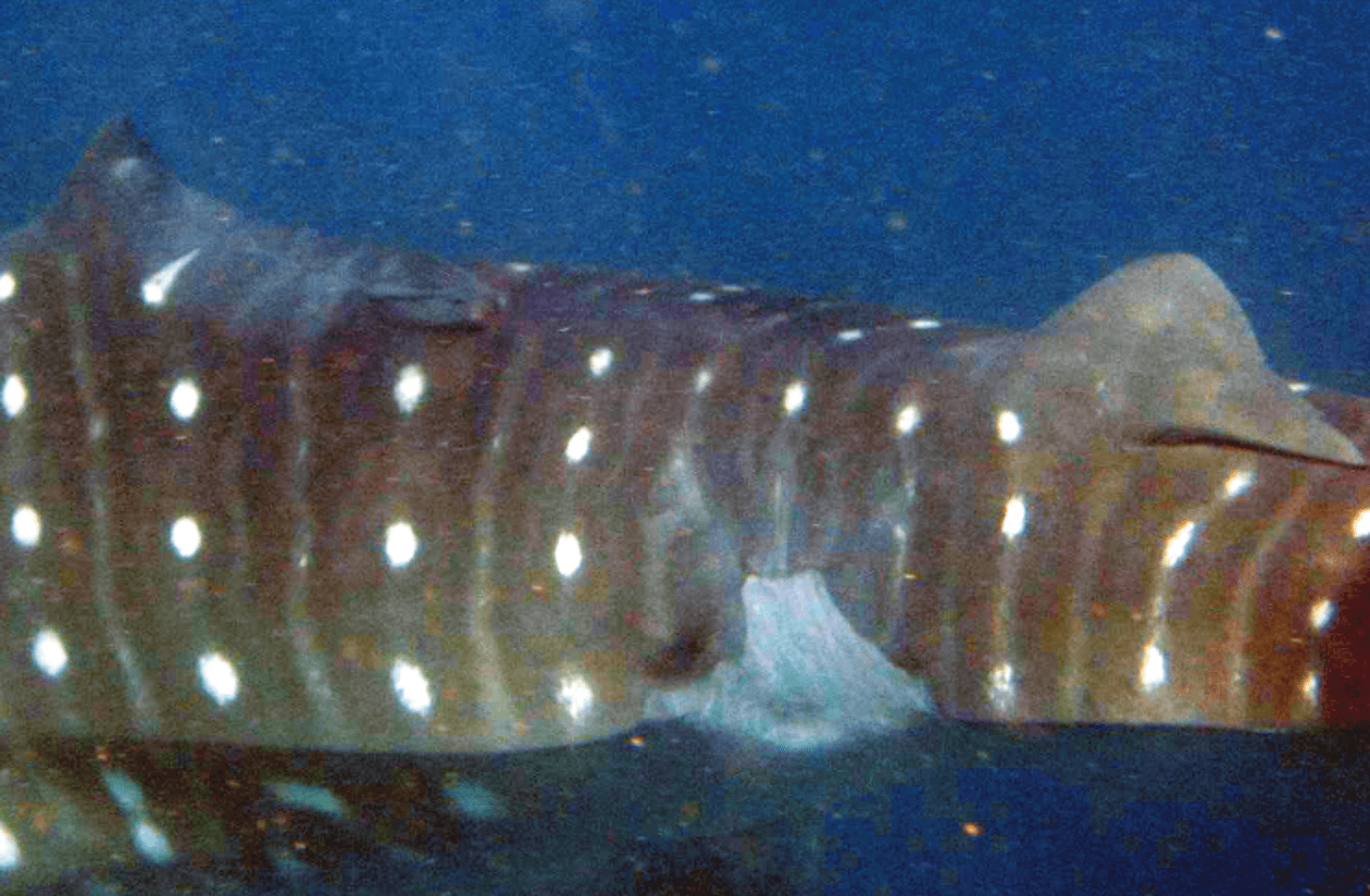
But skin alone cannot protect a whale shark. Killer whales occasionally kill them and tear them apart with little difficulty, just to get at their nutritious livers.
They also do the same thing to great whites, and if the news is any indication, even more often. Fortunately for whale sharks, Orcas are not as numerous as great whites. For example, although 1,000 Orcas have been identified off the coast of Alaska, a 2011 survey showed 2,400 great whites off Central California alone – over 10X the previous estimate (https://news.nationalgeographic.com/news/2014/06/140626-great-white-shark-recovery-conservation-oceans-animals-science/). Around Australia there are at least 8,000 great whites – and this, compared to a 2010 “estimate” that put their numbers worldwide at only 3,500 animals. (https://phys.org/news/2018-02-great-white-sharks-australia-coast.html). Although Orcas are, with their superior intellect and cunning when it comes to taking apart large prey items, apparently more efficient at killing whale sharks, they do not appear to target them as often. Otherwise, the species might find itself in real peril.
Most predator attacks on whale sharks (excluding those of that often most voracious of killers, Homo sapiens) are the result of other sharks. This includes great whites, tigers, and others. It is the combination of the whale shark’s skin and anatomical adaptations, along with the typical attack style utilized by predatory sharks, that contributes to its survival.
When a great white or tiger shark attacks a large marine animal, the tendency is to aim for the rear portion – mainly, the base of the tail, in front of the flukes or caudal fin, and in the region of the peduncle. We see this when they attack cetaceans, elephant seals, and even whale sharks. This type of strike is doubly advantageous for the attacking shark. It greatly reduces the risk of receiving a retaliatory strike from the victim (which might wound or even blind the shark) by avoiding its “business end”. The shark also stands a good chance of crippling the prey item by eliminating its means of propulsion. We can see evidence of this type of strike in this photo of a wounded whale shark.
Whale sharks, which are far too slow and cumbersome to avoid this kind of attack, have apparently evolved a way to simply weather it. If you study the photo above, you see that the strike takes place on the fish’s elongated, and coincidentally heavily developed, caudal keel. Some scientists have theorized that predatory sharks hit this area because it’s easy to grab onto. I believe it’s something else. I believe the whale shark specifically evolved this hyper-developed caudal keel region to give predatory sharks an inviting target. It has developed what I refer to as a sacrificial “crumple zone”, like in a car; it’s designed to not only entice the attacker to hit there, but to also minimize damage – especially the structural kind.
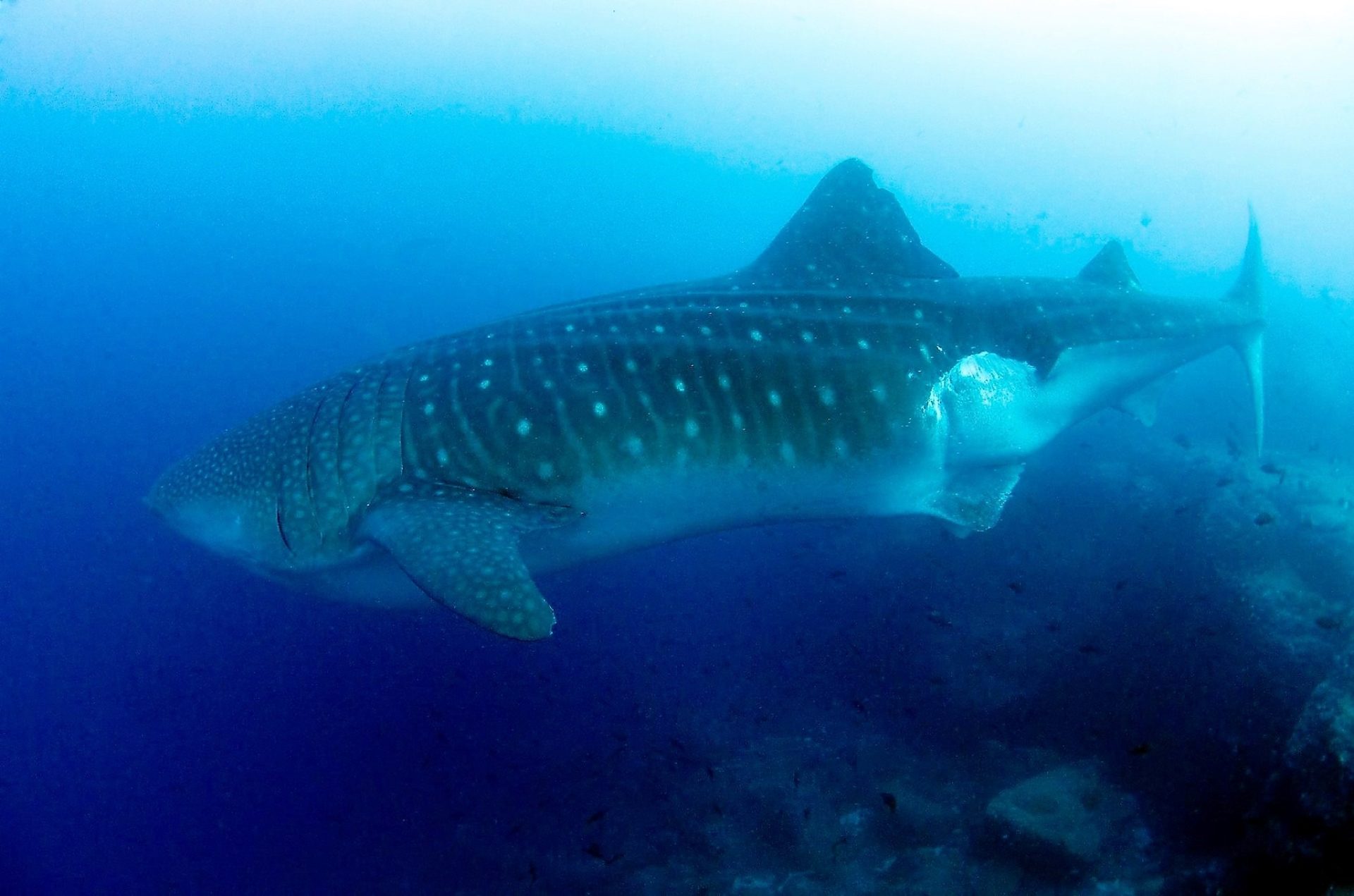
When a great white or tiger shark hits this overly-developed caudal keel its jaws end up biting into a huge mound of tough dermal tissue. This tissue, which undoubtedly is fibrous and bloodless, is most likely also distasteful and interpreted by the attacking shark as being innutritious. It is designed to be sacrificed and, when it is bitten, and even when a huge mound of it is excised, it leaves the “meaty” part of the shark, including the massive muscles that power its caudal fin, intact and unharmed. Note the overly developed caudal keel on a whale shark, when seen from above, which stretches more than half its body length, and the drawn-in predator approaching ( Photo by Simon J. Pierce).
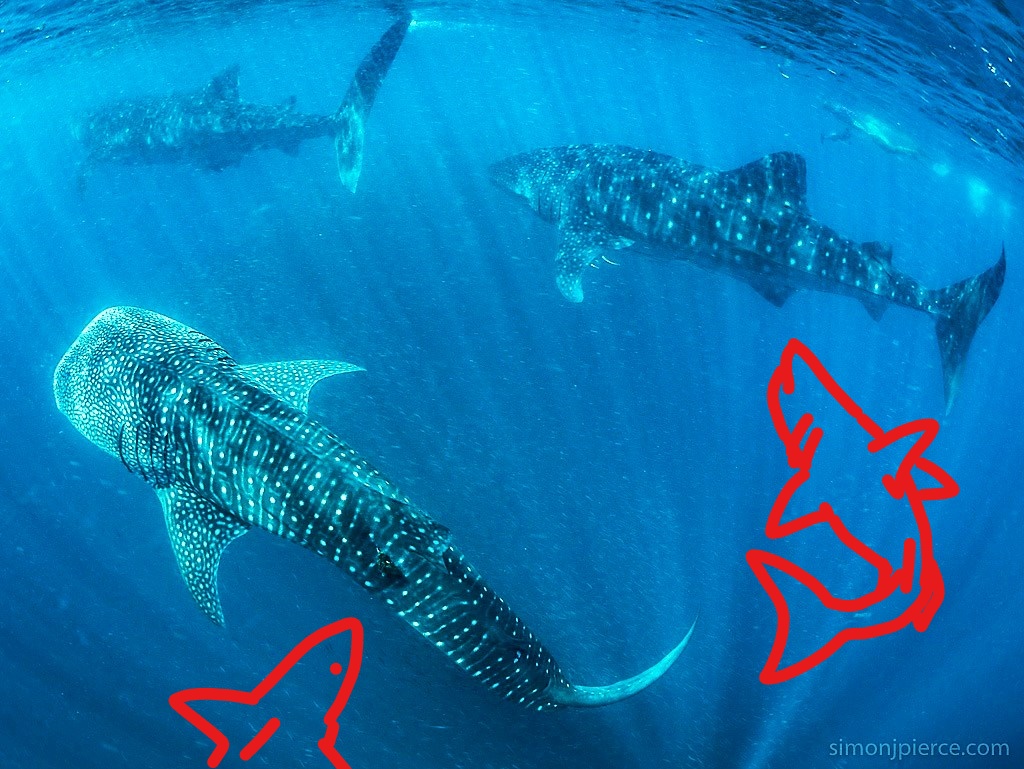
Thus, we can see that whale sharks have won (or at least managed to survive) their “arm’s race” against aggressive, predatory sharks, by simply giving them something harmless to bite on. And bite they do. The attacker typically comes away with a mouthful of unpalatable dermis and the whale shark struggles free and swims on its way, none the worse for wear. In fact, the experience may even “condition” an attacking shark to avoid whale sharks in the future, causing it to recognize the species as birds do a Monarch butterfly, a repugnant and inedible prey item.
Max Hawthorne, author
#PrinceofPaleofiction
#JawsMeetsJurassicPark



